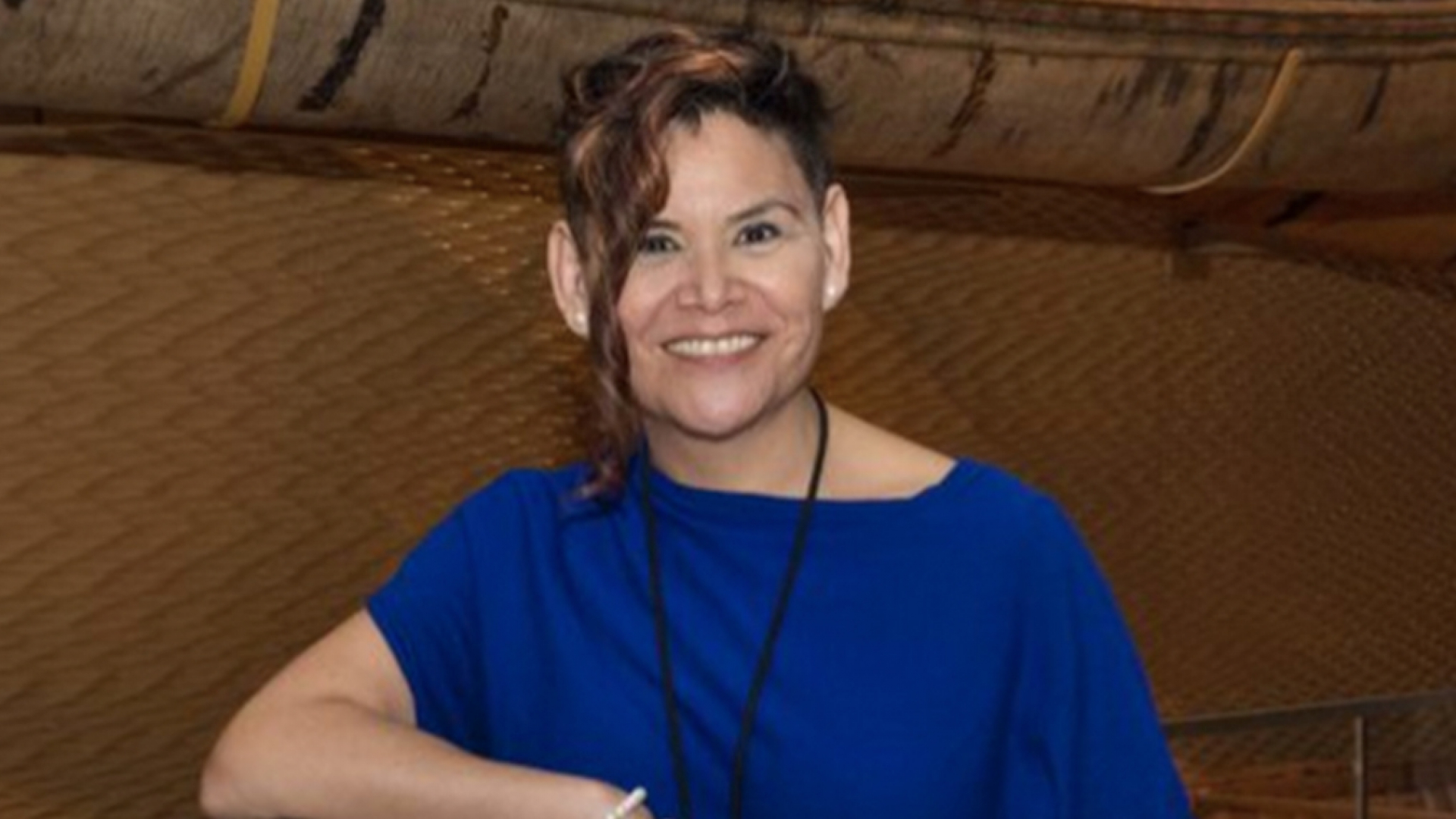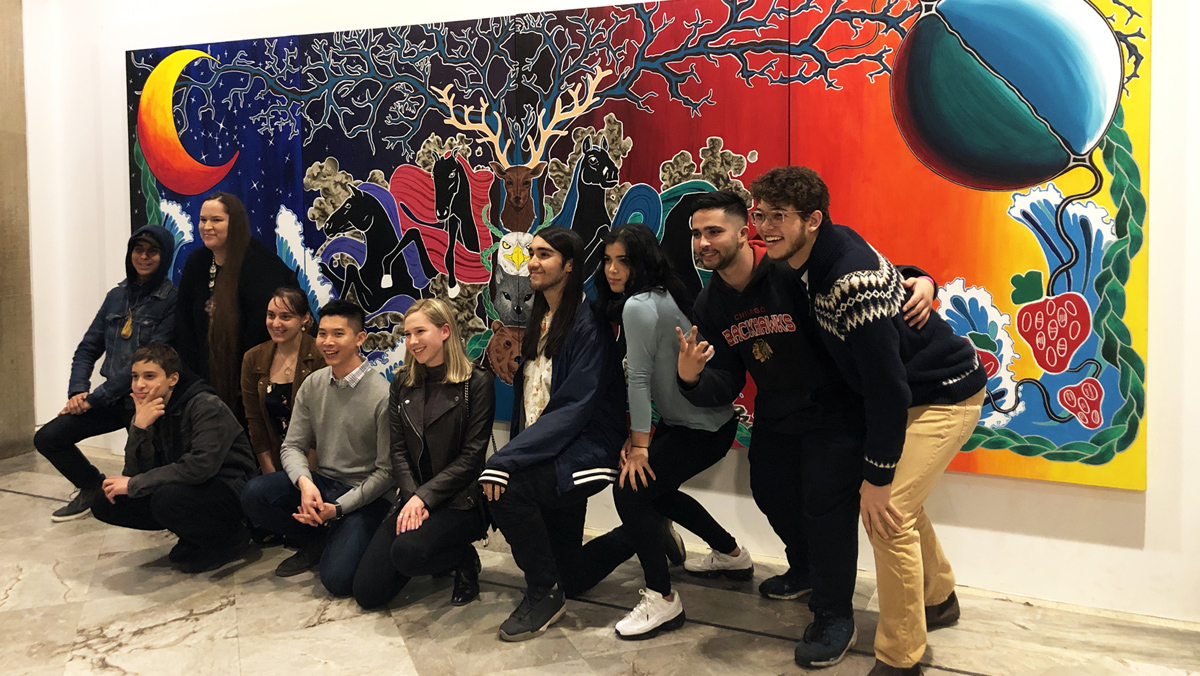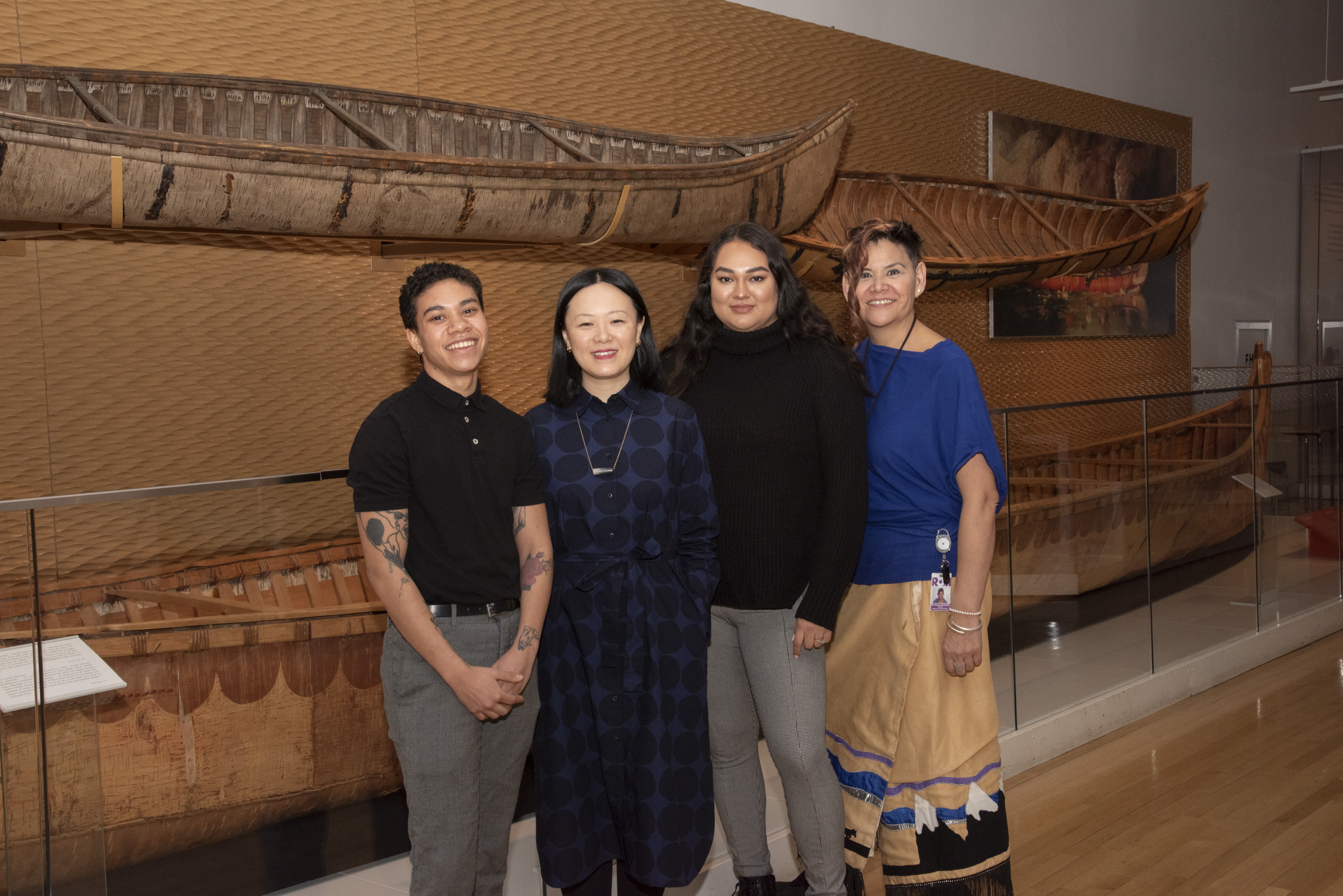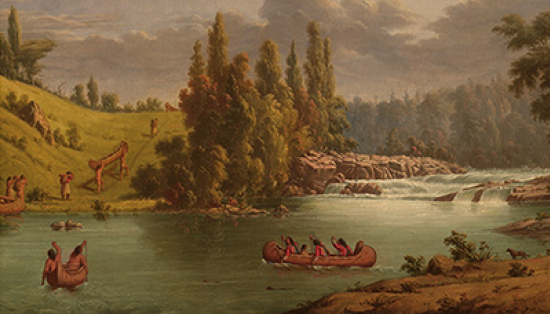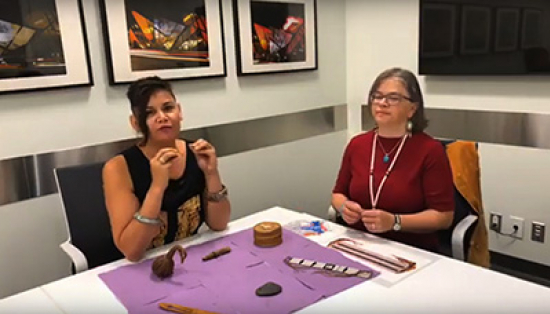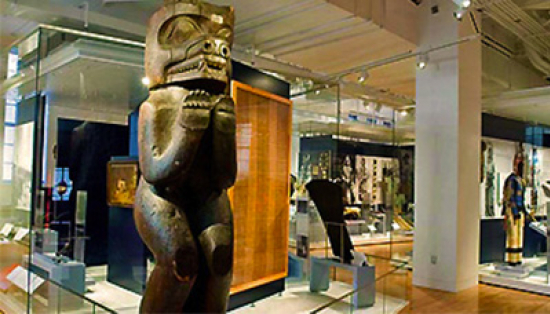Every Thursday at 10 am on Instagram we chat with a different ROM expert ready to answer your burning questions on a different subject. This time on Ask ROM Anything we are talking to J’net AyAyQwaYakSheelth (One who gives away and still stands tall), the Indigenous Outreach and Learning Coordinator. As part of the Learning Department, J’net leads the development and implementation of relevant Indigenous content and perspectives in School Visits and community outreach programs. This work is designed to advance awareness, understanding, and appreciation for Indigenous cultures and heritage in both historical and contemporary contexts. J’net also developed an Indigenous Advisory Circle of knowledge carriers, elders, youth, and artists to assist the ROM with the authentic representation of Indigenous peoples in educational programming, youth programs, and expand our outreach throughout the province.
Q. What are some common misconceptions about the Indigenous community?
A. A major misconception is that we are all one (good looking) group of people, or that we are all related? We are not one nation – in Canada we have at least 65 distinct nations broken into 633 First Nations communities.
Q. As a newcomer to Canada, how can I learn about Toronto’s Indigenous history and roots?
A. The ROM acknowledges the museum is only 105 years old and that the building is on the ancestral lands of the Haudenosaunee Confederacy, the Anishnabwe that includes Mississauga of the Credit First Nations, and the Wendat. You can start with an internet search of each of these nations. First Story Toronto is an app that allows you to get a visual history of this area. There is also Tkaronto Indigenous People’s Portal online, which gives you tonnes of information about the more than 50 non-profit agencies and cultural events in the GTA urban Indigenous population.
Q. Do indigenous people only eat fish and seafood?
A. If you are lucky enough to live in an area and have access, then many nations of indigenous will feast on seasonal seafood. However, many of us live in cities – I like a frozen pizza in a pinch!
Q. Where are some of the most Indigenous places in the world?
A. This is a broad question – we are all planetary citizens, and many indigenous nations believe we are the caretakes of the land all over the planet. So, a patch of grass in the city is just as Indigenous a space as a rainforest, because of the larger relationship and respect for our homeland.
Q. What are some effective ways for teaching Indigenous culture with a non-European lens?
A. Time on the land is always a good place to start. Circle up the learning environment to equalize relationships. Have indigenous aunty and/or grandmother energy in the classroom. Eating together is another way to nurture relationships in any learning or working environment. Take time to be thankful, with mindful moments that may include simple cleansing rituals or just quiet time as a group.
Q. What are some of the changes you have seen the ROM do in terms of indigenous cultures?
A. We have an 8-10 member Indigenous Advisory Circle that informs our Learning programs. We have grant-funded annual full-time paid internships for three indigenous youth (the Kiowa Wind Memorial Indigenous Youth Intern, the Indigenous Digital Learning Intern, and the Indigenous Gallery Assistant Intern).
We host an Indigenous youth lead program called ROM Youth Cabinet, which includes youth from across all cultures between the ages of 16-20.
There is also free general admission year-round for self-identified First Nations, Métis and Inuit to the Museum. The general public also have free access to the Daphne Cockwell Gallery dedicated to First People’s art & culture throughout the year, since 2018.
We also have a tobacco offering bowl in the First People’s Gallery, where guests can make offerings and give thanks for ancestral objects in the gallery.
Hack the ROM is an innovative province-wide program that engages grade 4-10 students to make digital media projects inspired by Indigenous ancestral objects in our collection.
We also offer customized learning sessions to the public and private sector, and ROM staff have been invited to also take this training internally to ensure we all have the same tools to authentically and respectfully celebrate living Indigenous cultures.
Q. Where may I find and support Indigenous advocacies in Canada, or specifically Ontario?
A. The Truth and Reconciliation Calls to Action is a place to start to get informed about what actions the community needs to right relationships.
Check out the National Association of Friendship Centres – most urban centres across the country have one.
Q. How well has Indigenous content been received in community outreach programs?
A. With our small team of six Indigenous Knowledge Resource Teachers, we have been able to broaden our outreach to include attending community events like sacred fire at Native Canadian Centre each month to lay down tobacco collected. Our Indigenous Advisory Circle has asked that we design our programs with ‘reconciliation through participation’ as our guide, and not just have Indigenous entertainment!
Q. Do Indigenous people have to fight for food with other Indigenous people?
A. Indigenous groups have respect for customary borders between ancestral lands of the upwards of 65 distinct nations across Canada. We are more often in conflict with the many levels of government to access our traditional foods.
Q. What has been your favourite project to work on?
A. My favourite project has been to see our paid internship go from one intern annually to three internships that are generously funded by Miziwe Biik Aboriginal Employment and Training. We are committed to building up Indigenous youth leadership and do so in the loving memory of our fallen-warrior and first intern the late Kiowa Wind McComb.
Q. Are there any protocols that should be respected before visiting Indigenous exhibits at the ROM?
A. Just after you walk into the First Peoples Gallery, to the right and facing east is a tobacco offering bowl where guests can make an offering. If you do not have any tobacco, guests are welcome to just take a moment to thank the ancestral objects on display in their own way.
Q. How do you recommend learning about first nations cultures?
A. Start with finding out who’s ancestral homelands you live on and learn to say it correctly. Sound or video clips online can be searched to hear people say original place names in distinct languages. There are entire book sections and post-secondary courses devoted to indigenous knowledges! I also encourage you to watch Aboriginal Peoples Television Network online – that ought to get you started!
Q. What Indigenous art projects are you excited to share?
A. The ROM Youth Cabinet Mural members were part of a historic event in 2019 to have youth across cultures draw inspiration from invited Indigenous artists and knowledge carriers to collaborate and co-create a permanent original painting mounted at the ROM dedicated in loving memory of the late Kiowa Wind McComb, our first Indigenous Youth Intern.
Q. What traditions do most Indigenous families take part in today?
A. Keep in mind, we are not all one group of people and will have diverse traditions. One elder back home said ritual makes our prayers physical; so, one tradition is to give thanks which can be done in many ways including a quiet moment of mindfulness and making a connection to your homeland.
Q. Best online/text resources to learn Indigenous content when there’s no access to the ROM?
A. We have Our Voices, Our Histories as a ROM online resource to see a basic timeline of events from both Indigenous and Western perspectives. You can also watch Indigenous Insights on ROM at Home.

